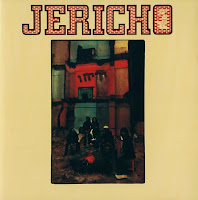A guitarist named John Thomas seems to have as much chance of being recognized as an individual as a fire hydrant in an urban setting. . An attached nickname can sometimes be helpful when faced with such a challenge, and this Australian performer came up with a good one when he dubbed himself "Creepy" John Thomas after moving to London. Still, not everyone who hired him wanted to call him a creep in the liner notes so, for example, he is sometimes mistaken for the British guitar player John "J.T." Thomas, who joined Budgie in '78. Neither one of these commonwealth blokes have anything to do with the John Thomas who plays guitar on hip sides with Joe Henderson and Jimmy McGriff.
Creepy John Thomas also made use of the stage name Johnny Driver. His first professional success took place as a songwriting member of The Flies, a combo based out of Melbourne that had Australian chart hits. The Flies were known to land support gigs for some of the biggest 60's attractions touring down under. Such as The Rolling Stones and Roy Orbison. British RCA put out his self titled Creepy John Thomas in 1969, a follow up enchantingly titled Brother Bat Bone ensuing on Teldec. A firm entitled fingerprint has apparently reissued both of thees masterworks, yet Thomas himself warns fans that there are bootleg
productions.
Thomas spent a year in San Francisco following the original release of these solo albums, but by the early 70's, had returned to London and a position in the Edgar Broughton Band. Two albums with this outfit feature Thomas, a particularly practically titled "Bandages", seeing it's the album that has cuts on it, that is -- combining him with studio mastermind Mike Oldfield. The artist also collaborated with Dave Stuart and Annie Lennox prior to their Eurythmics success. During the late 70's, the artist took up another location shift, heading to Berlin and starting up his own Johnny & the Drivers band. Thomas enjoyed Berlin, Where creeps are popular, for a decade. Again, the project netted him two more albums on as many labels, in this case Polydor, and Phonogram. He relocated again to London, where he became a producer.
Artist Bio: Eugene Chadbourne for Allmusic.
Creepy John Thomas also made use of the stage name Johnny Driver. His first professional success took place as a songwriting member of The Flies, a combo based out of Melbourne that had Australian chart hits. The Flies were known to land support gigs for some of the biggest 60's attractions touring down under. Such as The Rolling Stones and Roy Orbison. British RCA put out his self titled Creepy John Thomas in 1969, a follow up enchantingly titled Brother Bat Bone ensuing on Teldec. A firm entitled fingerprint has apparently reissued both of thees masterworks, yet Thomas himself warns fans that there are bootleg
productions.
Thomas spent a year in San Francisco following the original release of these solo albums, but by the early 70's, had returned to London and a position in the Edgar Broughton Band. Two albums with this outfit feature Thomas, a particularly practically titled "Bandages", seeing it's the album that has cuts on it, that is -- combining him with studio mastermind Mike Oldfield. The artist also collaborated with Dave Stuart and Annie Lennox prior to their Eurythmics success. During the late 70's, the artist took up another location shift, heading to Berlin and starting up his own Johnny & the Drivers band. Thomas enjoyed Berlin, Where creeps are popular, for a decade. Again, the project netted him two more albums on as many labels, in this case Polydor, and Phonogram. He relocated again to London, where he became a producer.
Artist Bio: Eugene Chadbourne for Allmusic.









































